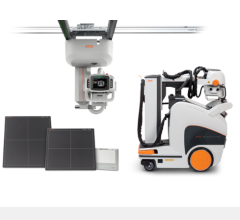
September 27, 2010 — The Radiological Devices Panel of the U.S. Food and Drug Administration (FDA) unanimously voted that Hologic Inc.’s pre-market approval (PMA) demonstrated both the effectiveness and safety of the company’s Selenia Dimensions 3-D digital mammography tomosynthesis system. The panel also voted in favor that the benefits of this new technology outweigh the risks.
Following the panel meeting, Hologic will work with the FDA on next steps for approval of its 3-D digital mammography system. While the panel’s favorable vote is advisory in nature, the FDA will consider it in its final review of Hologic’s PMA application for the Selenia Dimensions tomosynthesis system.
“Our Selenia Dimensions 3-D technology marks tremendous progress in the early diagnosis of breast cancer,” said Jay A. Stein, cofounder and chief technical officer. “The system is designed to increase accuracy when screening women for the presence of cancerous tissue and to enable a more precise characterization of suspicious lesions. I speak for all of Hologic in voicing great satisfaction that the FDA panel has weighed in so positively in favor of this valuable new tool in the battle to limit breast cancer mortality.”
Selenia Dimensions 3-D digital mammography tomosynthesis system is a new method for breast cancer screening and diagnosis. Unlike current mammography systems, which generate a 2-D image, breast tomosynthesis produces a 3-D image. Hologic says it believes its multicenter clinical study has demonstrated that compared to 2-D digital mammography alone, 3-D digital tomosynthesis used in combination with 2-D digital mammography has the potential to reduce recall rates and improve cancer detection.
Selenia Dimensions 3-D digital mammography tomosynthesis system is presently commercially available outside the United States, including countries in Europe, Latin America and Asia. In North America, commercial systems are installed in Canada and Mexico. In the United States, Selenia Dimensions is currently available as a 2-D only system that can be upgraded to do breast tomosynthesis (3-D) imaging when and if the product is approved by the FDA.


 January 08, 2026
January 08, 2026 









